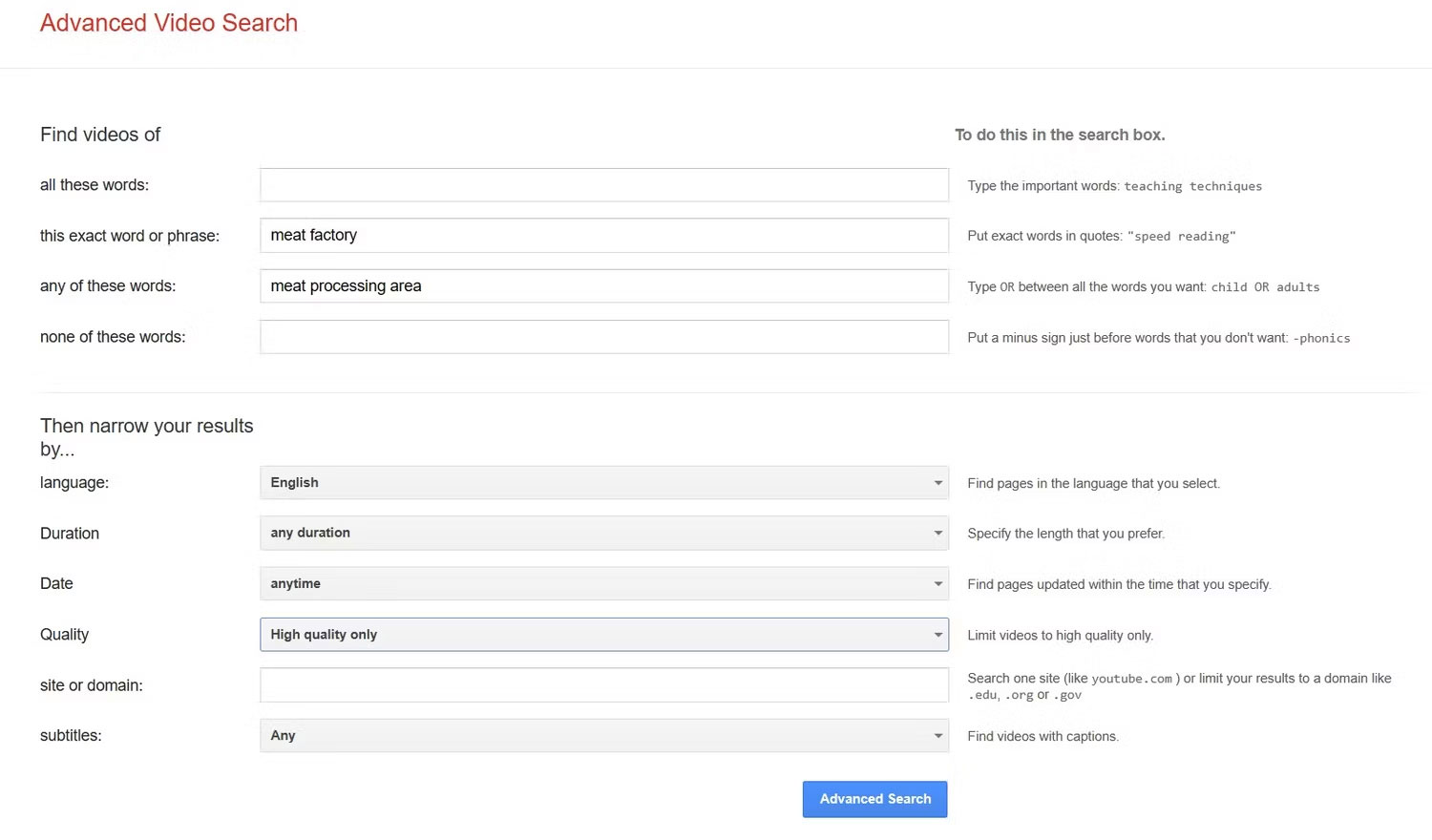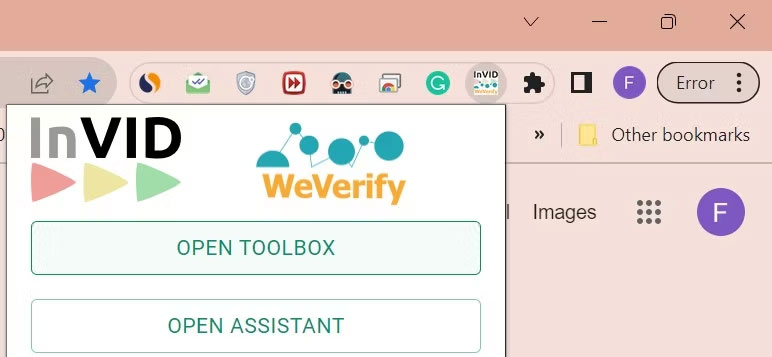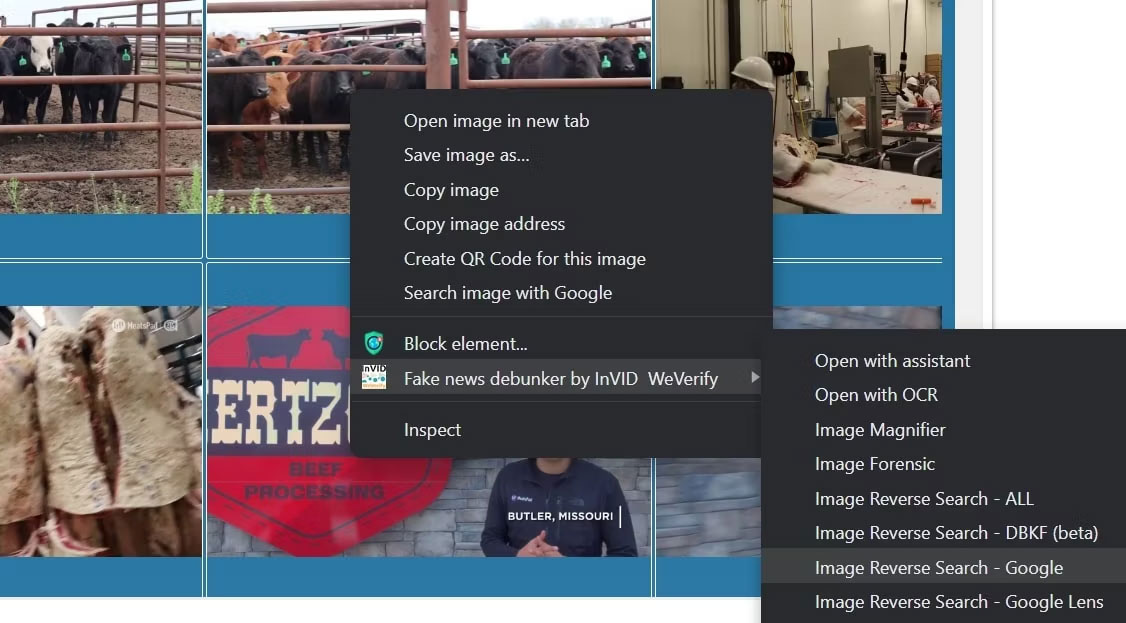How to find video sources on the web
Regardless of why you want to source a video, there are several ways to do it.
While some methods require manual operations, others use advanced tools to facilitate the process. Let's look at the top methods you can use to track down video sources on the Internet.
1. Manually trace the video source

Doing a manual search on Google, Bing, Yandex, and similar search engines is an easy way to find out where the video came from.
Although simple, this is not a reliable method and can take a long time as you navigate through a large number of search results. There is also no guarantee that you will find the video.
To find the source of a video using this method, you first need to look for clues within the video, such as the video's subject, the names of individuals mentioned in the video, or some dialogue.
For example, if you watched a video demonstrating how meat is processed in a factory, the video may have featured one of the factory managers whose name was mentioned. You can use this information and other clues, such as factory names, as the basis for your search.
Once you've collected these suggestions, you can combine them to search for videos using the search engine of your choice. Then, look at the search engine results to see if you can find the right video.
2. Use advanced video search tools
Using the information you've gathered from the video, you can search for the video's source using Google's advanced video search tool.
It requires you to enter a few words from the video recording, select a language, select a release date, and select a few other options. The tool will then show you related videos based on your input.
To find video sources using the advanced video search tool provided by Google, follow the steps below:
1. Open the advanced video search tool.
2. Fill in the fields based on the information previously collected.
3. Filter videos by language, duration, time, etc. to narrow your search results.
4. Click the Advanced Search button .

5. Google will show results related to your search, so check them out and see if you find the video you're looking for.

3. Reverse video search using screenshots
Reverse video searching using screenshots is arguably the most popular and useful way to find video sources.
This method requires you to take screenshots from a video and upload them to a reverse image search engine, where an algorithm identifies colors, pixels, and other elements and then tries to determine the location of the video.
After uploading the image, you can reverse search the image on Google or similar services provided by Bing, Prepostseo, IDQB, etc.
Other options include Berify, which reverses image searches across multiple search engines at once, Tineye, and reverse image search apps available on Android and iOS, such as Google Lens.
Just upload screenshots to any of these tools and see if they can lead you to the video you want.
4. Use on-screen elements to identify the video source
On-screen elements in your video can also help you get closer to the source. Most sites and online accounts randomly repost videos taken from other sources without changing anything.
So if a video has the original publisher's logo or a brand's name visible, you can use that information to find the source. Therefore, pay attention to the video and note every on-screen element you find.
If you find a brand name or logo in the video, find out which brand it belongs to and visit that brand's social media profile. There's a good chance you'll find the video there. Likewise, you can use other visual elements to position the video.
Note : Some publishers arbitrarily use their logos in other people's content to pass it off as their own, so make sure sources are authentic and verified before you rely on them.
5. Source videos using the Fake News Debunker extension
Mainly used by journalists to find news sources, you can also creatively use the Fake News Debunker extension to locate video sources. Here's how to use this extension:
1. Go to the Fake News Debunker extension page and add it to your browser.
2. Once added, click on the extension, then tap Open Toolbox .

3. Then navigate to the Video tab and continue to the Keyframes section , where you can segment the video.

4. Paste the video link or download and upload in the Source of the video section . Then, press Submit and the tool will extract frames from each video sequence as screenshots.
5. Right-click on any of those screenshots, expand the Fake news debunker menu from the context menu, and select the search engine you want.

6. Look at the search results and see if the search engine can locate the video. If a reverse search fails on one search engine, use another search engine.
Using images with more visual elements and clearer content will help search engines find relevant videos faster. So, carefully choose the images you want to reverse search.
Warning : While the Fake News Debunker extension is highly rated, be aware of the security risks that browser extensions pose.
You should read it
- Want to manage many sources of income well, please grasp these 6 important factors
- How to find song titles on a YouTube video
- How to find YouTube videos using AI Video Search Engine
- Google introduces a new feature that makes it easy to find important moments in a video
- How to install applications from unknown sources on Android
- How to find the song song name in any video
 How to use mail merge in Word to merge text
How to use mail merge in Word to merge text How to create a Slide Master on PowerPoint - Create a new theme for the slide
How to create a Slide Master on PowerPoint - Create a new theme for the slide How many people can use one Netflix account at the same time?
How many people can use one Netflix account at the same time? How to easily sign out of your Google account on your phone
How to easily sign out of your Google account on your phone 8 best text-to-speech apps for Android
8 best text-to-speech apps for Android How to change the default font in PowerPoint - Choose the font you want
How to change the default font in PowerPoint - Choose the font you want